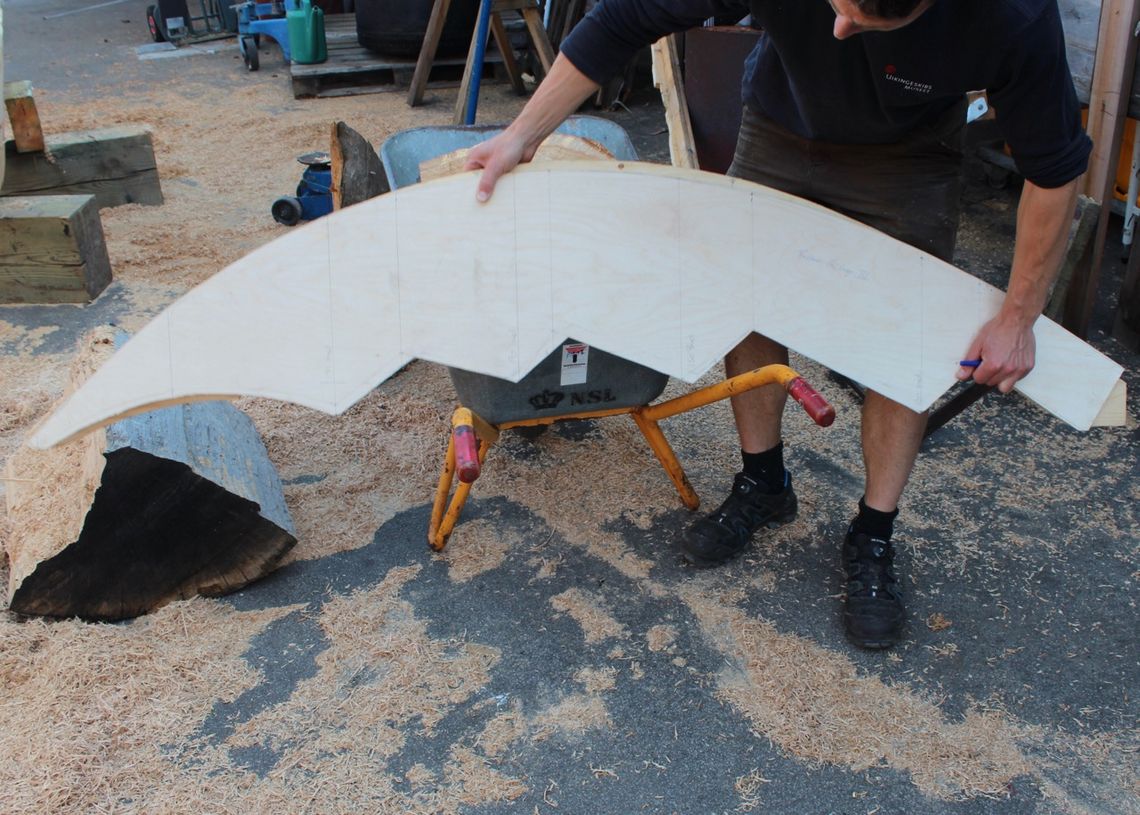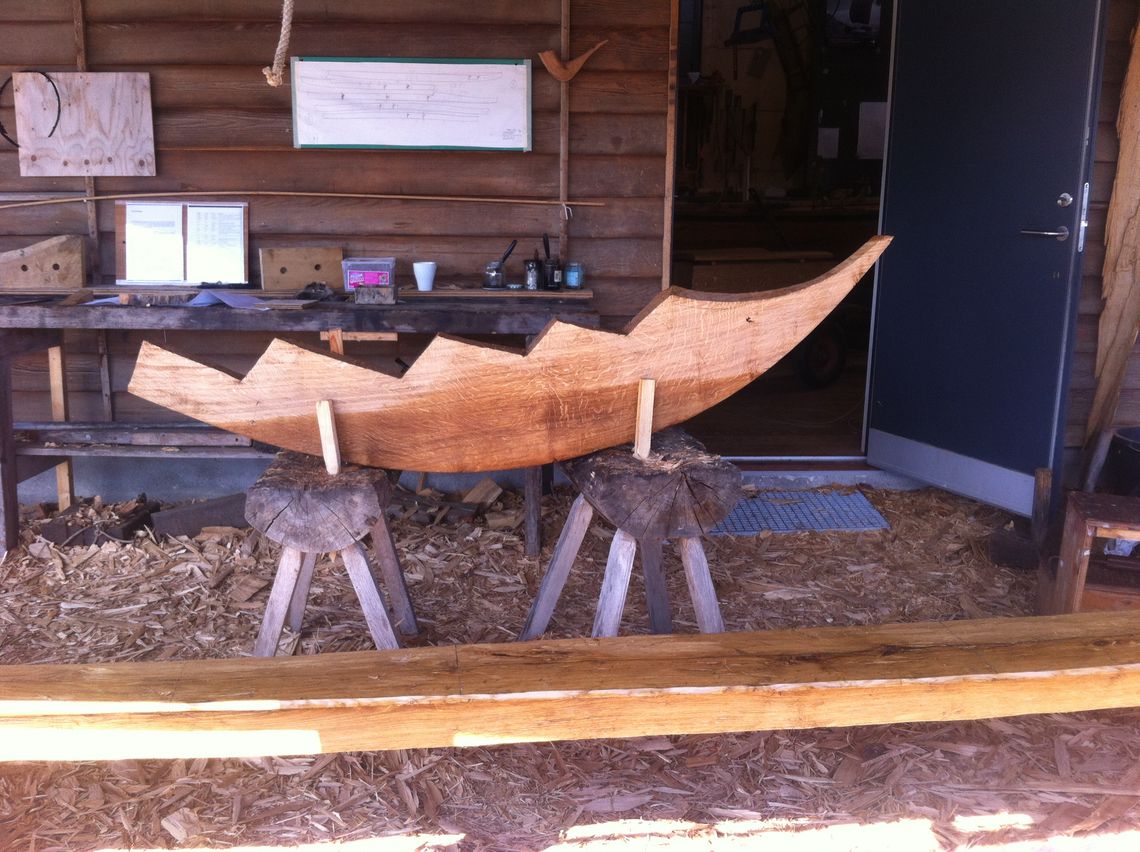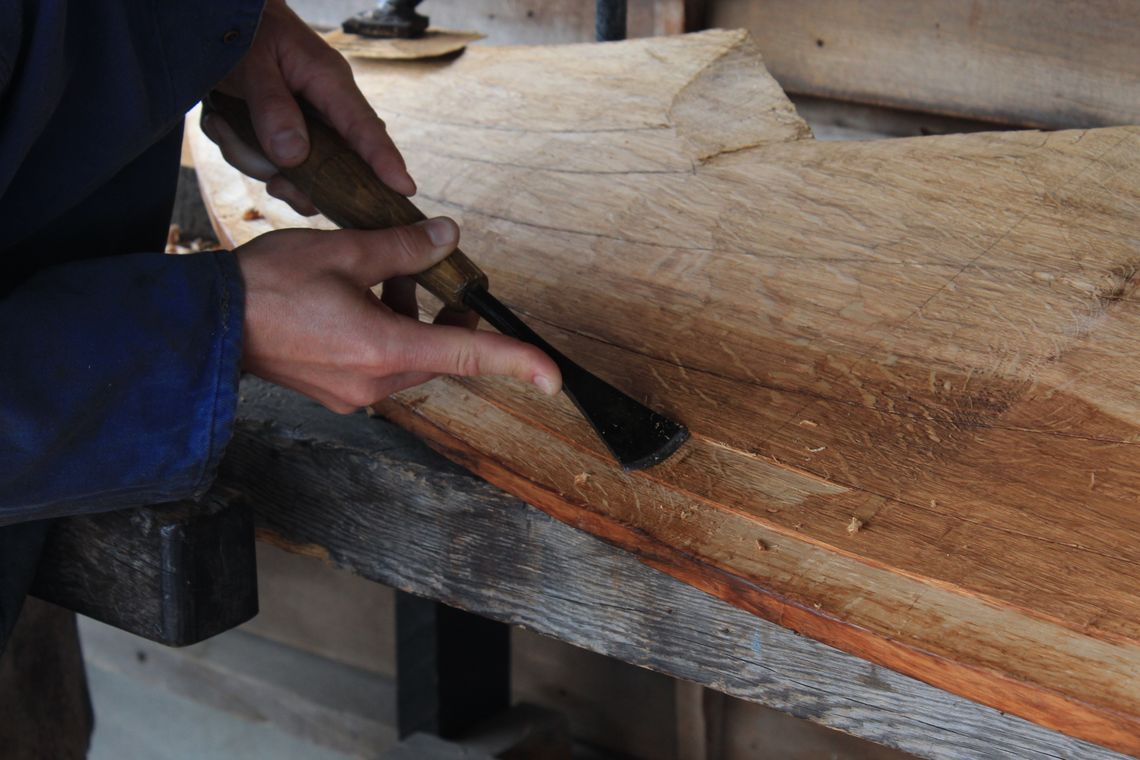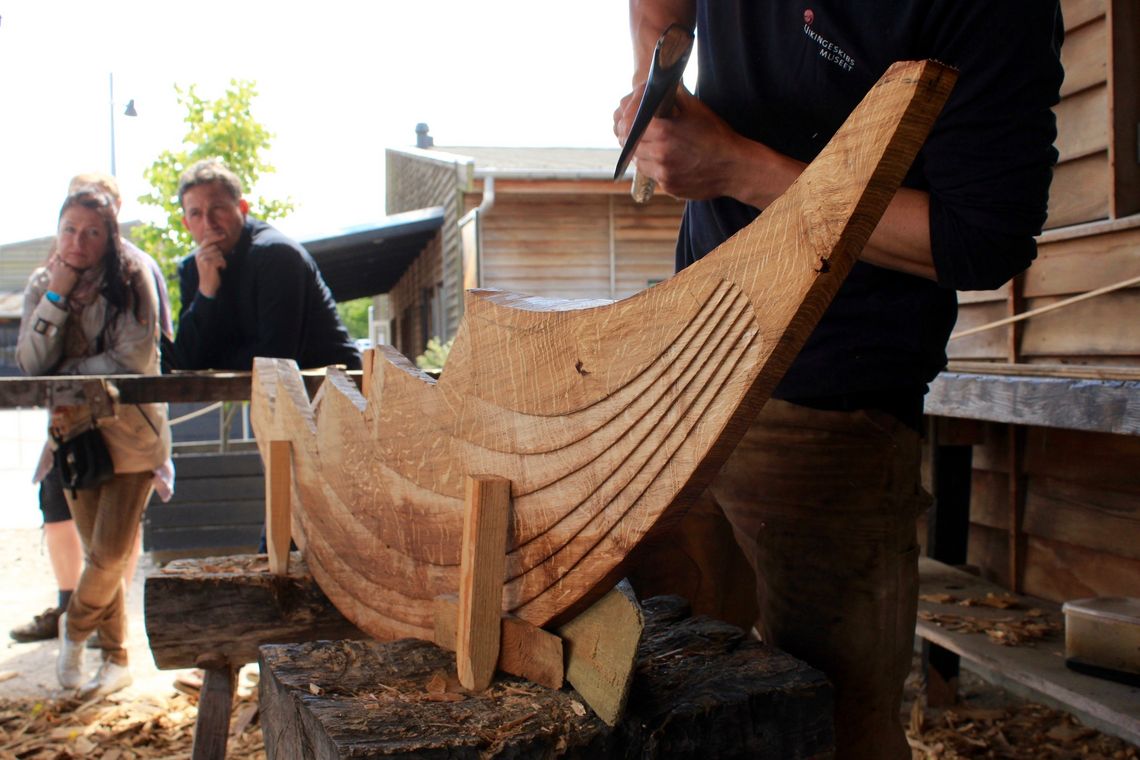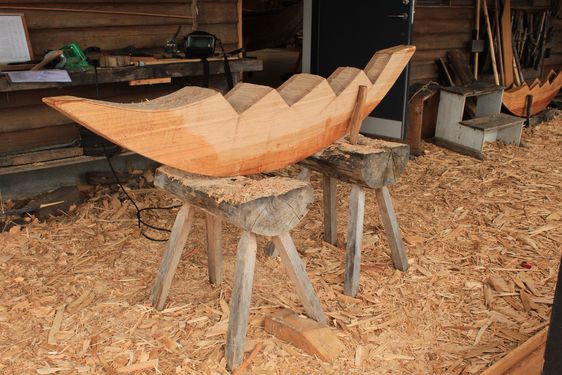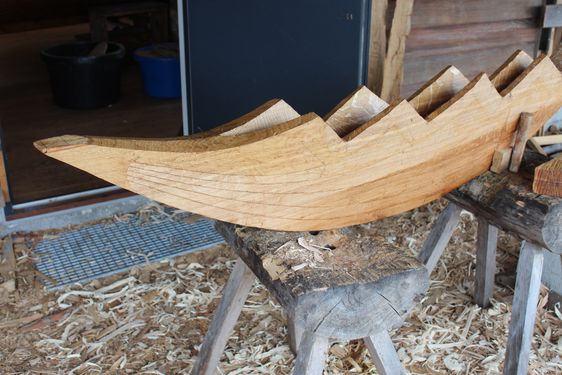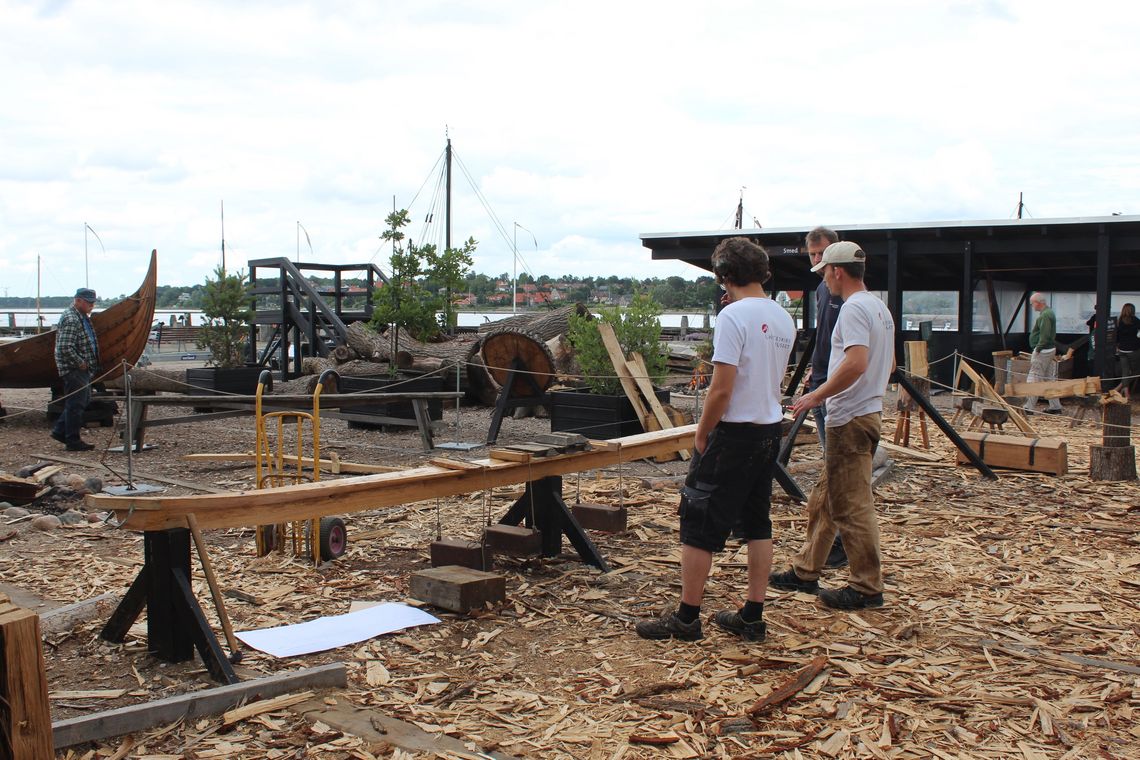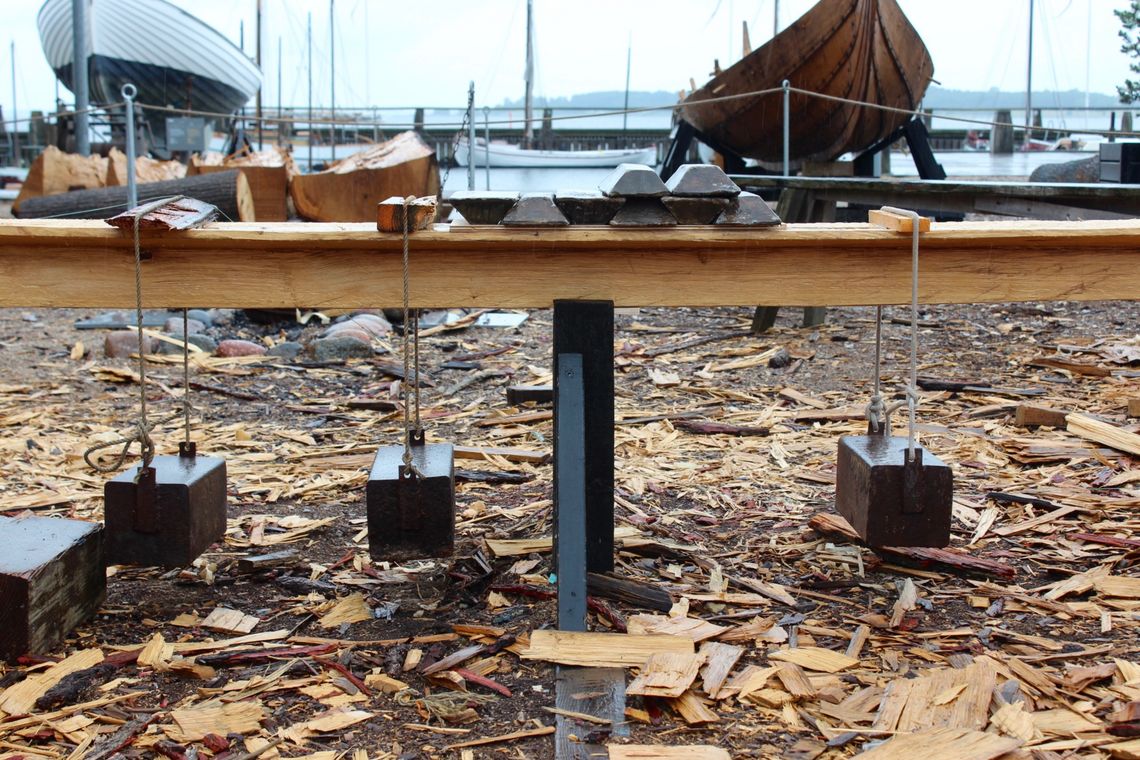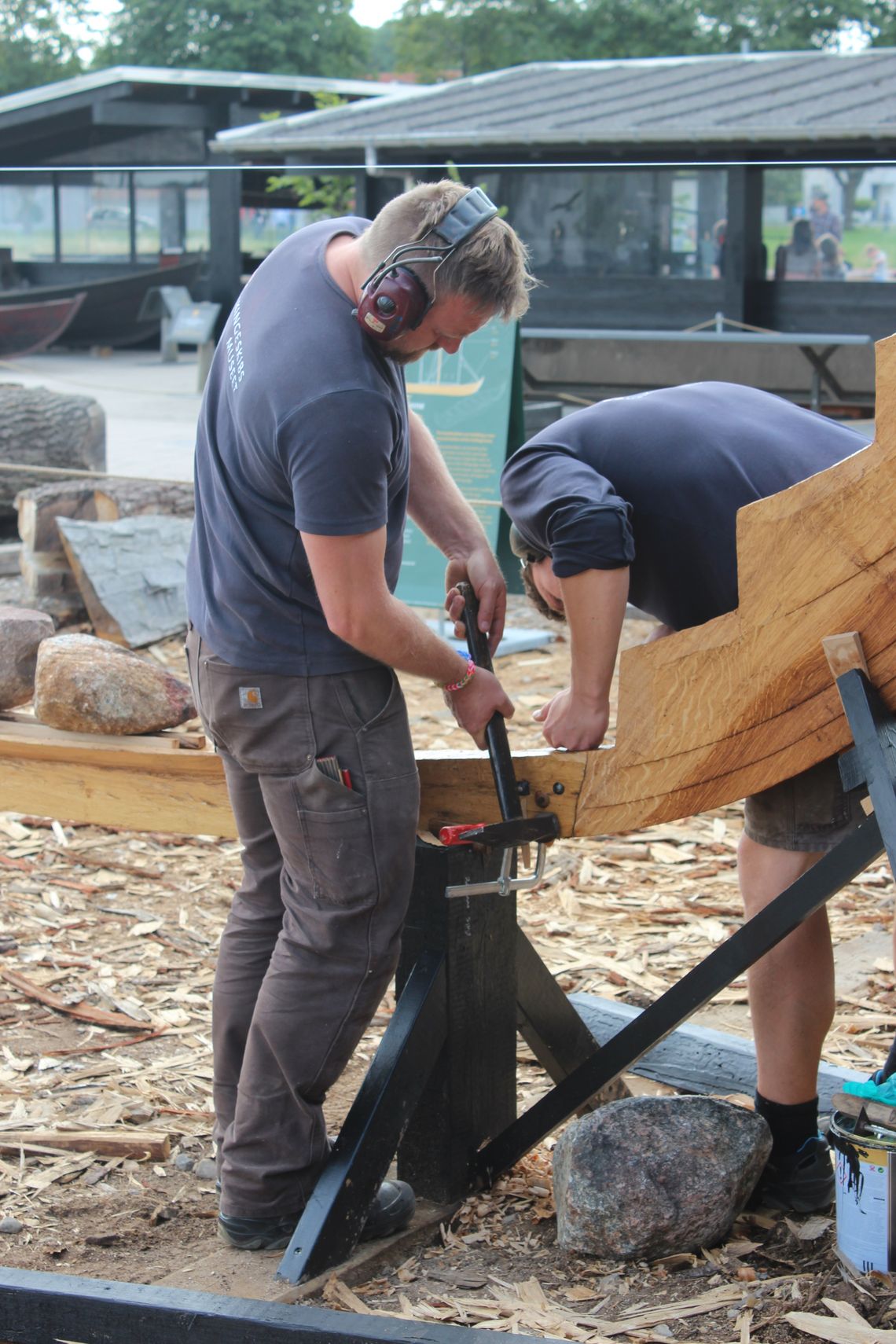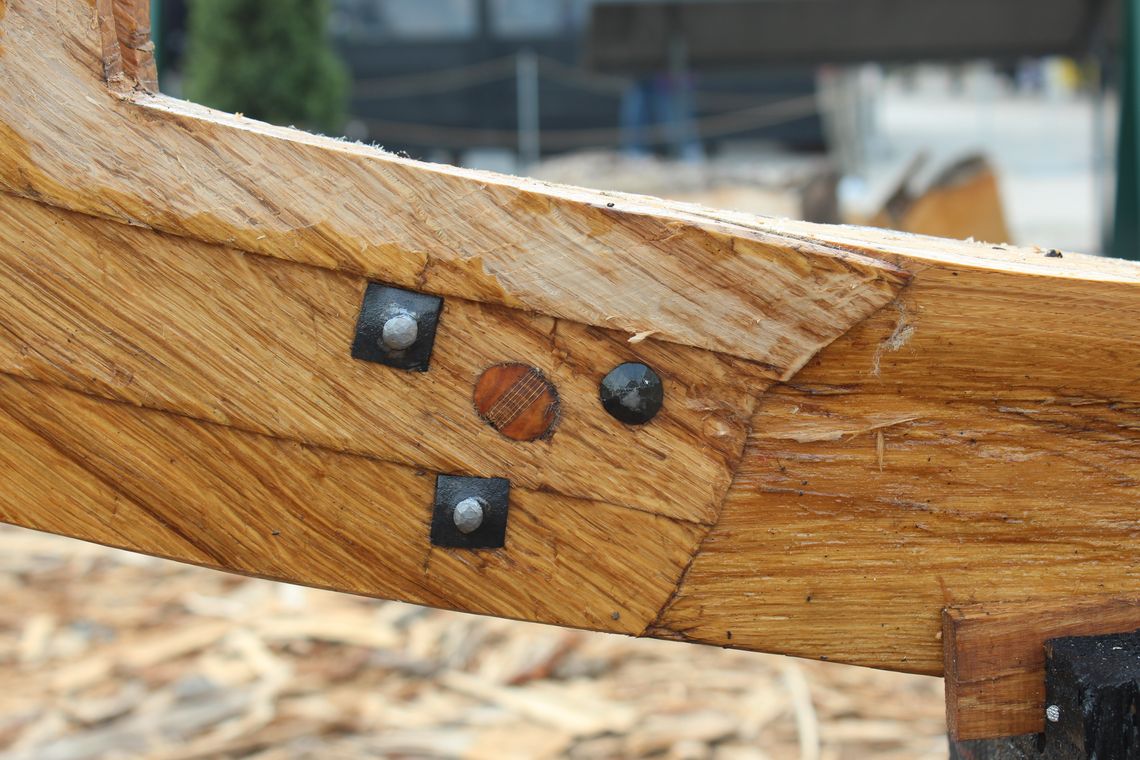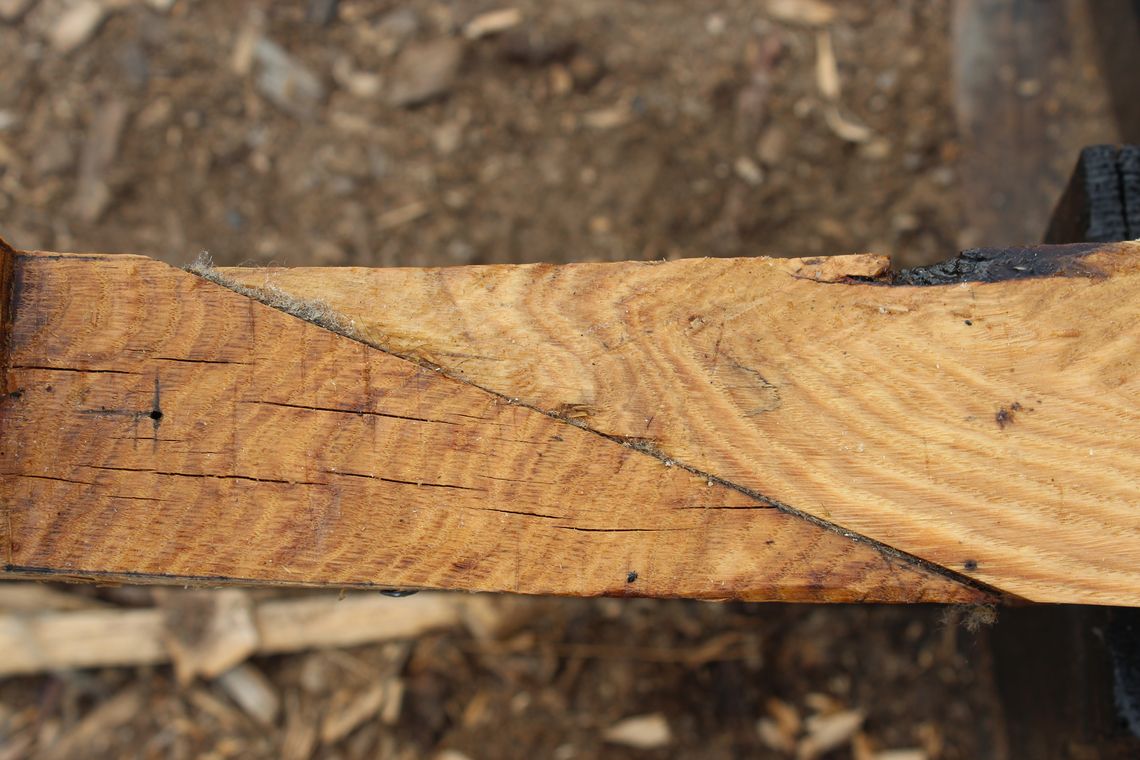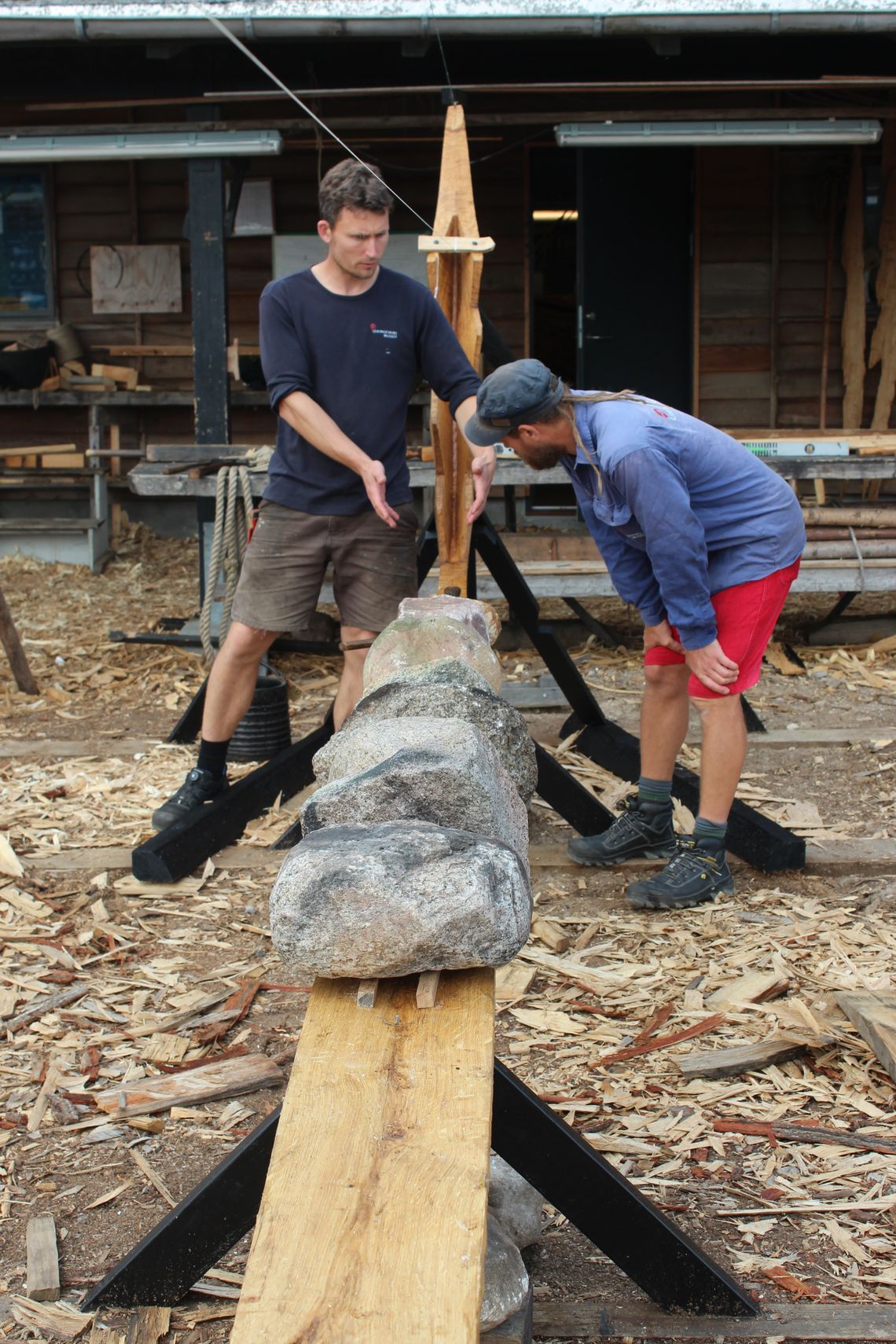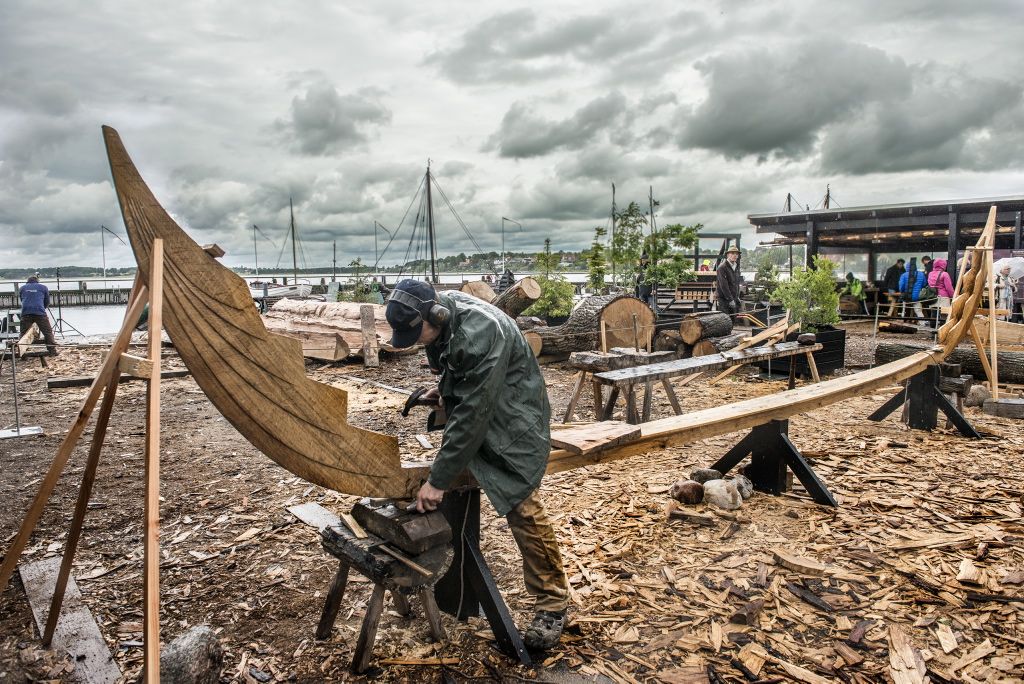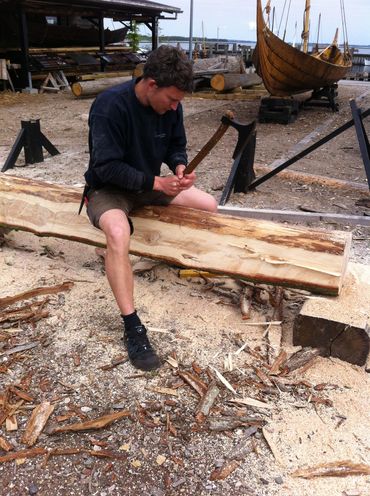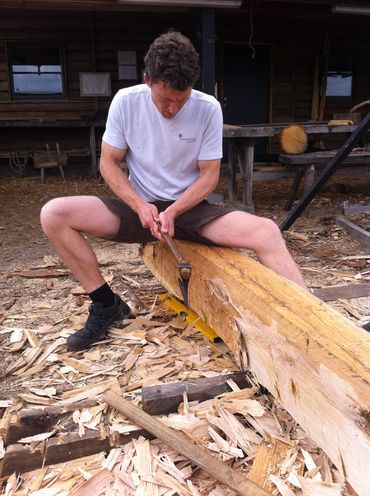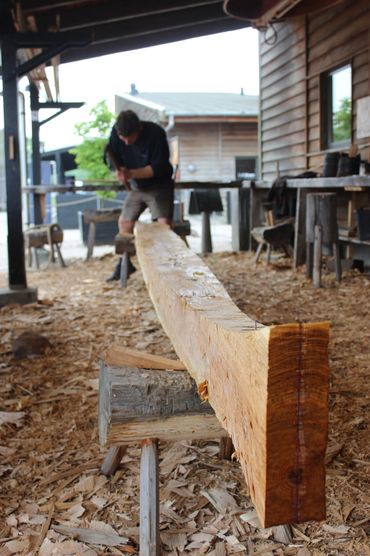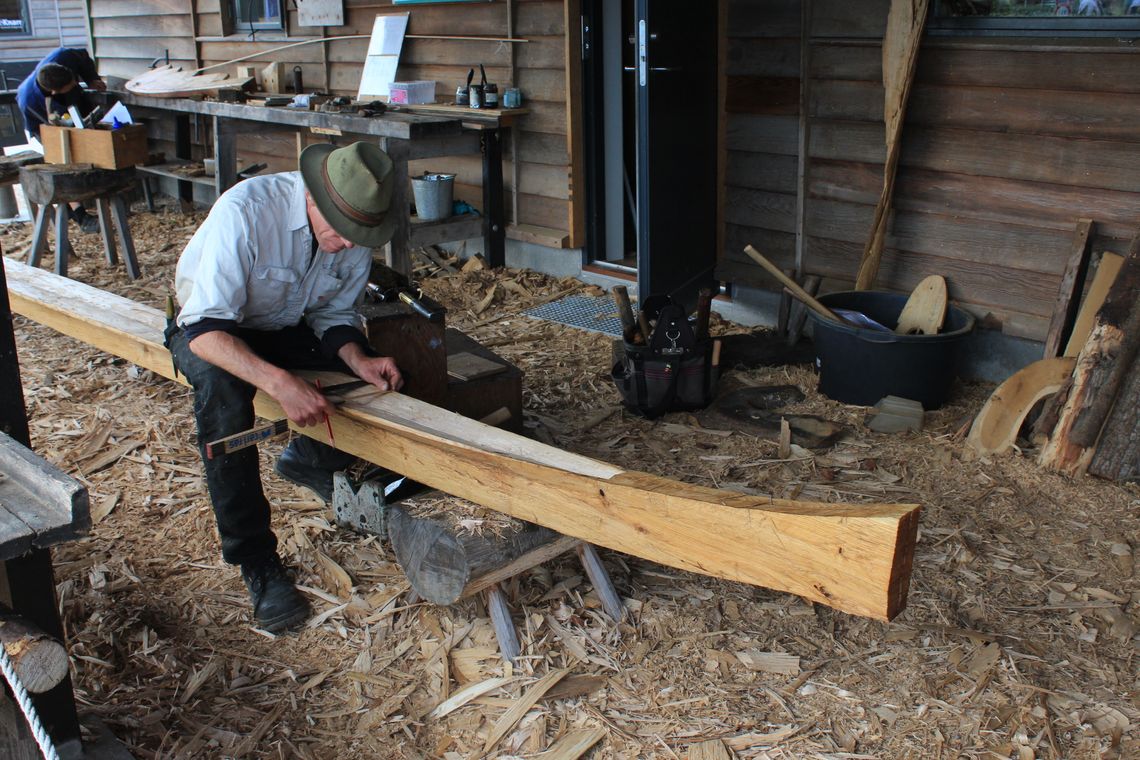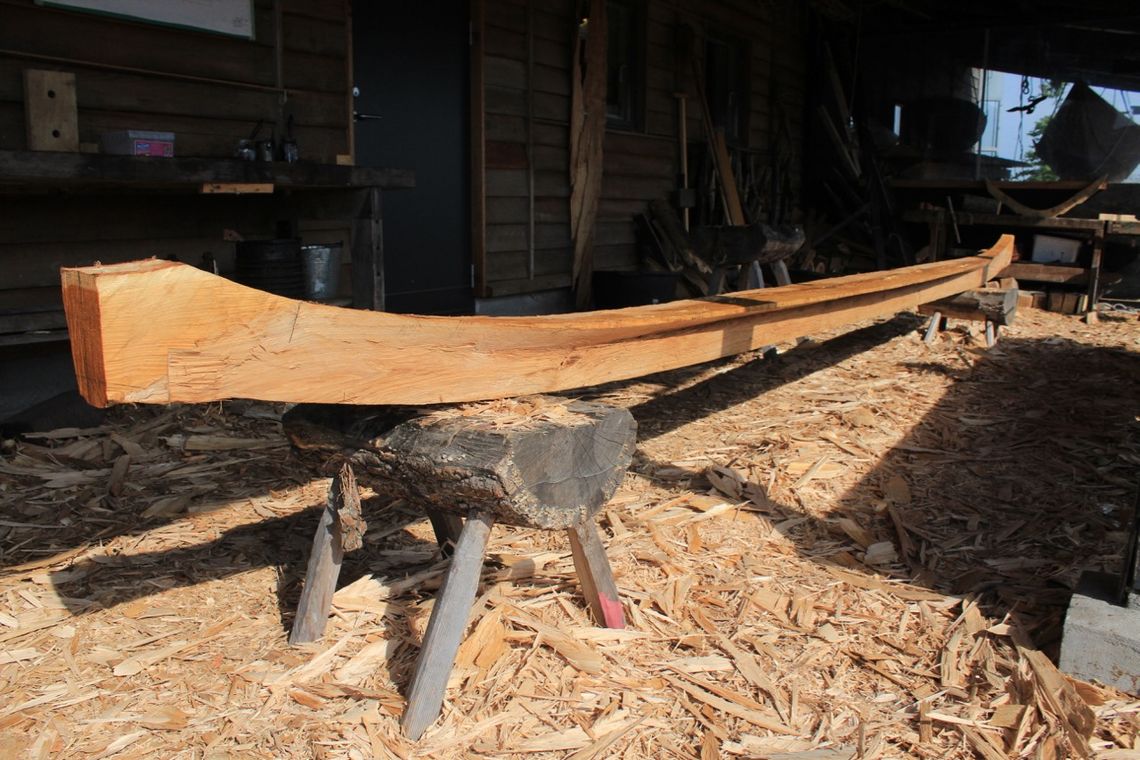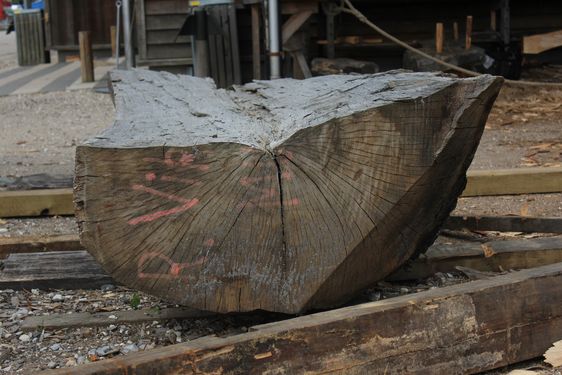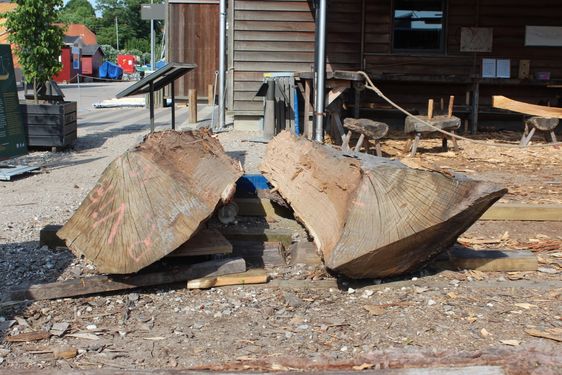Once the stems were complete, it was time to lay the keel in preparation for raising the stems. As we were building the same boat as last year, the stocks were already in position at the boatyard and didn’t require a huge amount of work to make ready. At the end of June, the keel was laid and weighted down, initially with metal weights and then later with stones, to press it back down into the desired lines. It needed to sink 3cm in all: 1.5cm of which was the result of the natural movement of the oak over the weeks the keel was being produced.
Raising the stems
The stems are joined to the keel using scarf joints. Lining the stems and keel up correctly takes time, and they are therefore first set temporarily in position while the final adjustments are made.
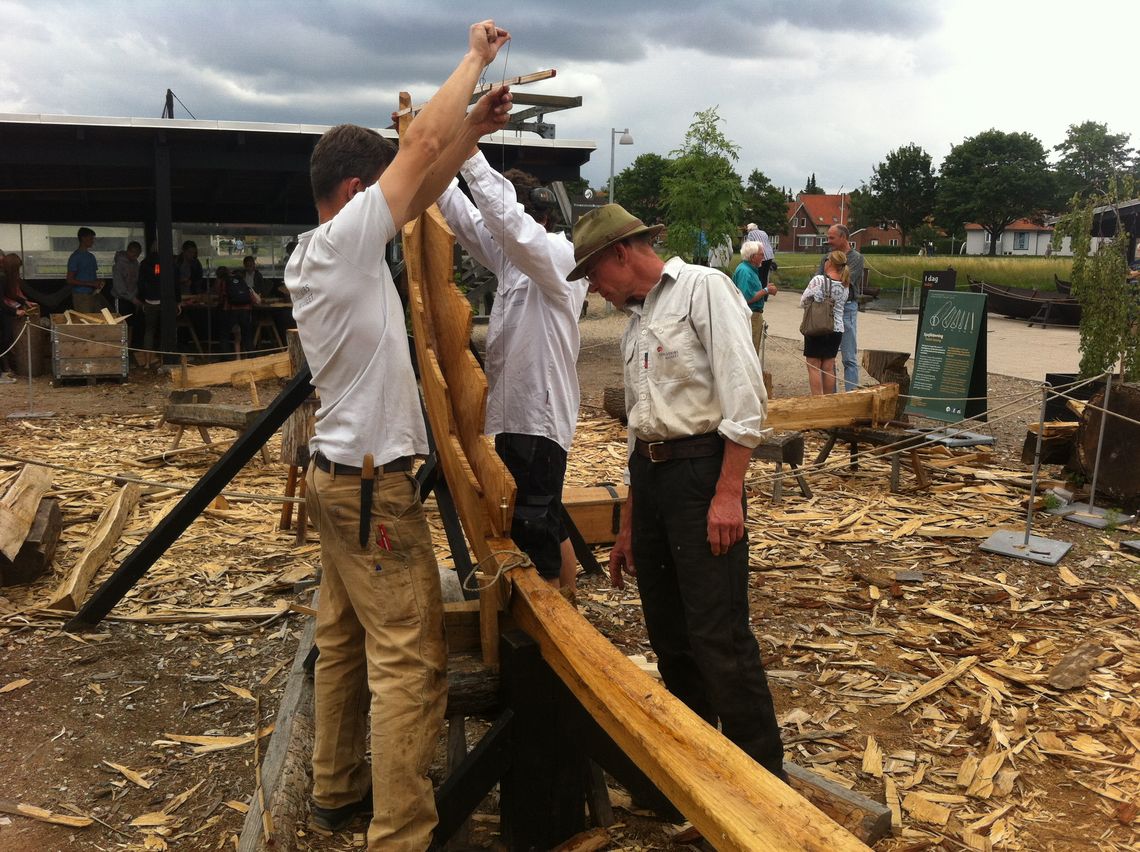
The boat's backbone
While the Middle Ages would see a number of major advances in maritime technology, at the time the Gislinge Boat was built in 1130, Scandinavian boatbuilding was still very much rooted in the Viking Age tradition. The most iconic element of Viking Age ships is probably the stems: the image of the streamlined hull, tapering off into narrow and elegant fore and after stems seems to underpin the speed and sailing capabilities of these ships, which made the Vikings the rulers of the seas in the centuries before.
Stepped-stems – such as those on the Gislinge Boat – are also where we see the clearest expression of Viking Age boatbuilding aesthetic. Made from a single piece of timber, the stems are carved in such a way as to create the illusion that the strakes all run seamlessly into the stem-top. This practice is what creates the sleek lines that we typically associate with Viking ships and its presence on a humble working boat like the Gislinge Boat, underlines how central an element of the boatbuilding tradition this was. Together with the t-shaped keel, the stems form the backbone of the boat and are the first elements that are produced when building a clinker-built boat.
Stem and keel for Gislinge III
First, the log was squared off. As the research element of the Gislinge III project was focused on the reinterpretation of the hull, it was decided to allow the limited use of modern tools – the initial squaring off of the keel for example, was done with a chainsaw – for tasks which were not of specific research value. Axes were then taken into use, as the shaping of the keel began.
